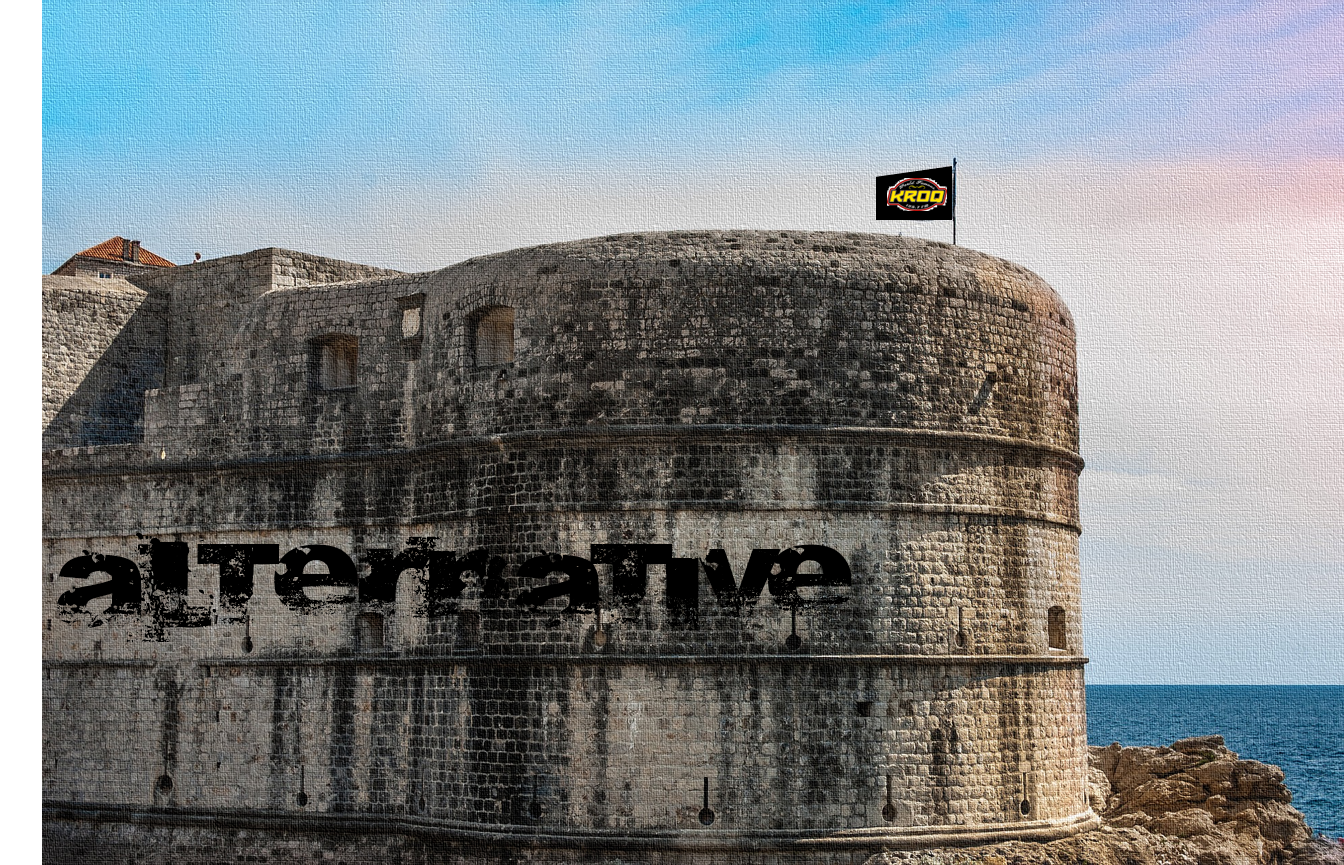
When it comes to radio sales, there aren’t too many stats that catch my eye, much less surprise me. But when I saw the ranker of the U.S. commercial radio stations with the highest billing totals for 2021, I was blown away.
Part of the reason was that the top revenue producer for all of radio wasn’t a station in New York, L.A., or Chicago. It wasn’t a San Francisco, Houston, Dallas, or Atlanta station. Nor was it a radio station in Florida.
Nope it was Hubbard’s WTOP in Washington, D.C.
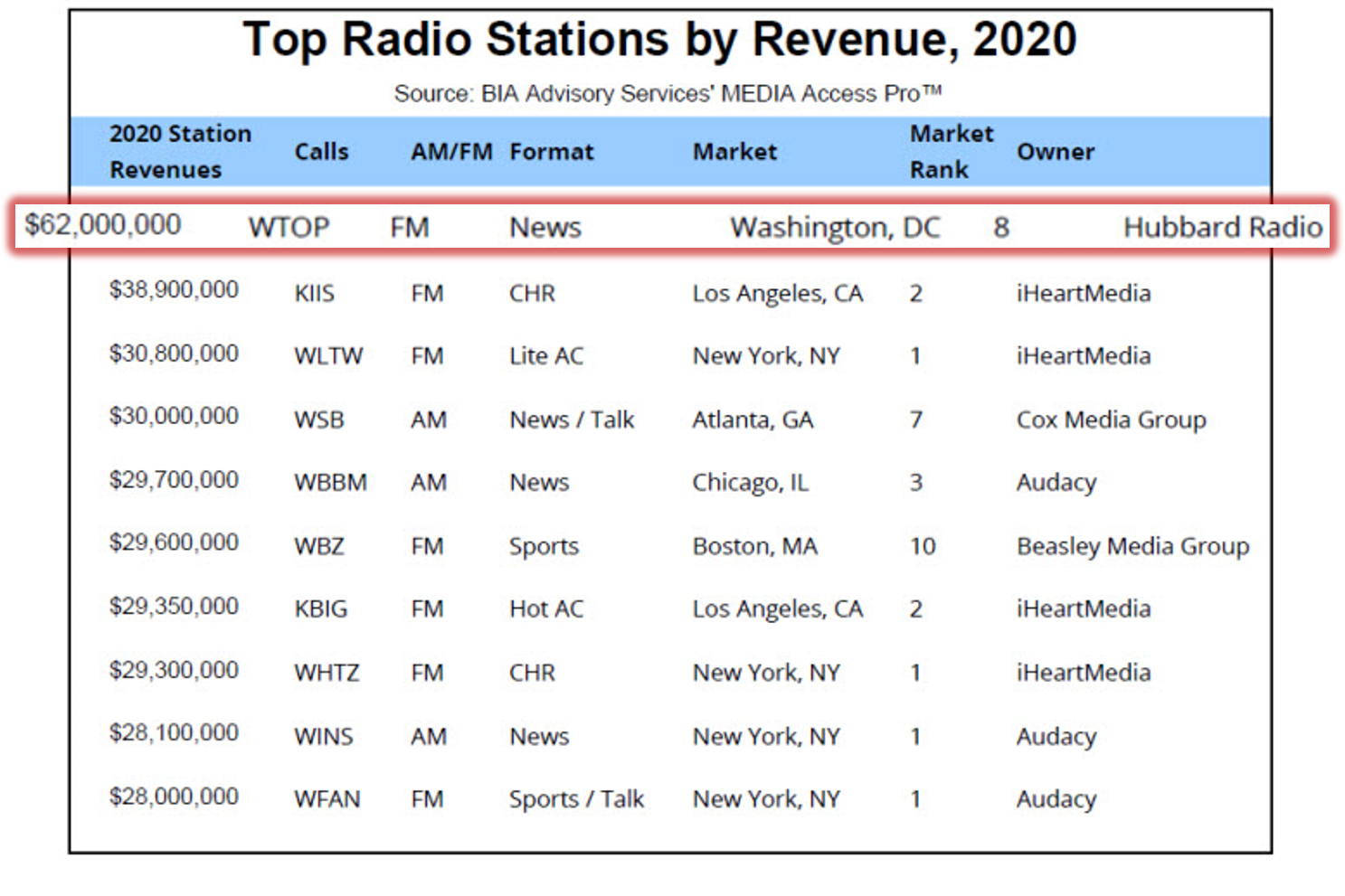
And the data is no fluke. It’s the sixth consecutive year WTOP has enjoyed #1 status on this list of monster billers. So, before we get any further, let’s give kudos to Joel Oxley and his entire team for this accomplishment.
But what’s even more impressive than WTOP leading all radio stations in revenue is their margin of victory. At 62 million dollars in billing, no other station comes close.
dollars in billing, no other station comes close.
WTOP has a 55% lead over the #2 biller, iHeart’s KIIS-FM in Los Angeles. Over the tenth best revenue generator in the country, Audacy’s legendary WFAN, WTOP holds an edge of 121%
And while the news cycle these past six years has played into WTOP’s favor, WSB, WINS, WCBS-AM, WBBM, and other similarly formatted stations aren’t even in the same conversation sales-wise.
That would make WTOP the “flagship” All-News station in the U.S. It’s the one the others will be compared to, steal from, and emulate.
In broadcast radio, there aren’t many of these obvious leaders – stations that define their formats, their genres, their categories.
But for decades, that’s what KROQ in Los Angeles represented to the Alternative format. Interestingly, KROQ also led the pack decades ago during the days when the music was known as “Modern Rock.” And it was the first station to hold the position of “Rock of the 80’s” back when Rick Carroll was first hanging out his shingle as the format’s first consultant.
KROQ took the handle – “World Famous” – and they leaned into it, deserved it, and owned it.
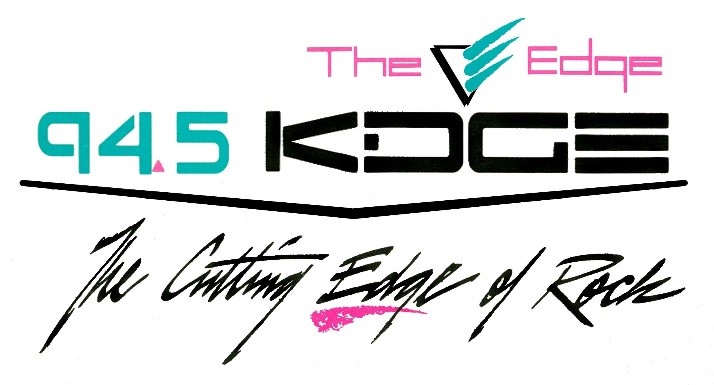 Jacobs Media introduced its version of the format – “The Edge™” back in the late 80s. We struggled in the early years, but were well-positioned when Grunge exploded out of Seattle. Soon after, we hired Tom Calderone and then Dave Beasing as format Sherpas – and we thrived. We still own the “mark” and consult stations in the format. But these are very different times for Alternative – or as it has now morphed into, ALT.
Jacobs Media introduced its version of the format – “The Edge™” back in the late 80s. We struggled in the early years, but were well-positioned when Grunge exploded out of Seattle. Soon after, we hired Tom Calderone and then Dave Beasing as format Sherpas – and we thrived. We still own the “mark” and consult stations in the format. But these are very different times for Alternative – or as it has now morphed into, ALT.
A common conversation in the 90’s and well into the 2000’s with our Alternative clients often went something like this:
Client: “How come KROQ does so much better than we do in the ratings?”
Us: “KROQ? Seriously, KROQ?! They’re in a different league than us and everyone else in the format. They’ve been around for decades, they have a world class morning show in Kevin & Bean, great jocks all day long, iconic festivals and events, and they’re led by Kevin Weatherly and his amazing programming team. It’s not even fair to compare us to KROQ. They’re in a class by themselves.”
And they were. 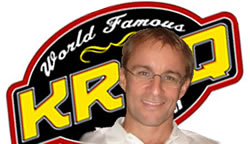 A few years ago at Joel Denver’s “summit” in Los Angeles, Weatherly had won yet another “Alternative Program Director of the Year” award – for the umpteenth consecutive year. One of our clients had done a sensational job at her station, and could have walked away with the honors – but not competing against Kevin.
A few years ago at Joel Denver’s “summit” in Los Angeles, Weatherly had won yet another “Alternative Program Director of the Year” award – for the umpteenth consecutive year. One of our clients had done a sensational job at her station, and could have walked away with the honors – but not competing against Kevin.
I suggested Joel rename it the “Kevin Weatherly Program Director of the Year Award” so that others might actually have a chance to win it. In 2022, that’s no longer an issue.
Clients are now asking “What’s wrong with KROQ, and what does its fall from grace say about the state of the format?
KROQ is no longer that station in L.A. Regularly in the top five in the all-important 25-54 adult demographic, their ratings today are very mortal. In just a few short years, they’ve lost their morning show, their “showrunner,” and most of their airstaff. And their mojo.
And remember that BIA chart featuring the country’s revenue leaders? KROQ was a regular on that ranker, back in the day when Trip Reeb was the manager and Weatherly handled the programming duties. I’m hard-pressed to think of another station in the Alternative format that ever performed its way onto that lofty list of revenue juggernauts.
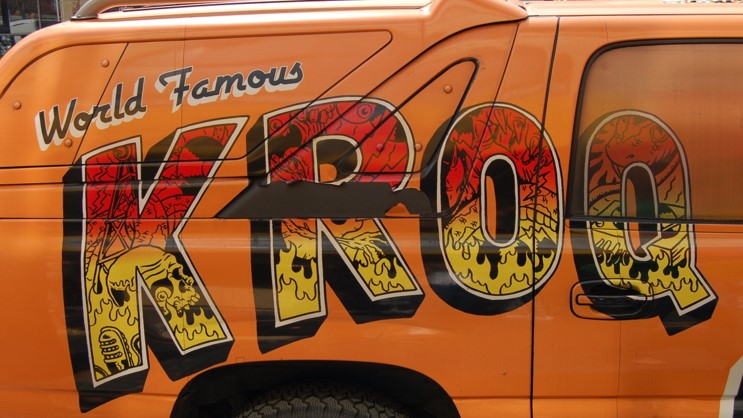
Admittedly, I have no inside knowledge about KROQ. I have never worked with the station in a consulting capacity, nor have I ever had the chance to be behind the scenes, in a position to look under the hood. And having consulted some truly great radio properties, Marconi winners, and other amazing stations, I can’t even begin to tell you chapter and verse what happened to KROQ. You just don’t know unless you’re on the inside – in the room where it happened.
Nor can I tell you they won’t get better in 2022, or in the years after. There’s enough institutional value in the brand that even with a different team behind the mic and behind the scenes, KROQ could easily make a comeback.
But to be the “flagship’ of the format again? That’s much less likely to happen.
And that begs the question about the format’s health. Does KROQ has the flu, does their slide signify that most other Alternative stations are – or will soon be – on life support?
And what, if anything, can be learned about KROQ’s travails, now going back several years? There are the obvious issues, many of which I’ve noted – staff personnel shuffles, a change in ownership, strong competition, and a global pandemic.
But to suggest KROQ was just another great radio station in the upper echelons of American radio does it and its former employees a disservice. When KROQ had it all going, it was a tribe – a movement you wanted to be a part of. In America’s hippest mecca where success is fleeting and there more has-beens than big stars, KROQ’s run was especially impressive. Los Angelinos wanted to go to “The Weenie Roast,” wear the station’s logo, and be a part of a very special radio brand.
Their fall from the stratosphere means more than if a once-famous radio station in Miami, St. Louis, or Chicago fell on hard times. Getting an “add” on KROQ was a huge deal for a band, an artist, a label, a promotions team. And the intangibles of movie stars and other movers and shakers waking up with Kevin & Bean, and tuning in the station while driving in L.A. was a special thing.
And that served as a reminder. Yes, KROQ – and other great Alternative stations over the decades have definitely been tribal in their appeal and loyalty. But much of that has been driven by attitude. The stations that truly mattered had one – or developed a vibe not just around the music, but around the lifestyle, the community, entertainment, and even politics.
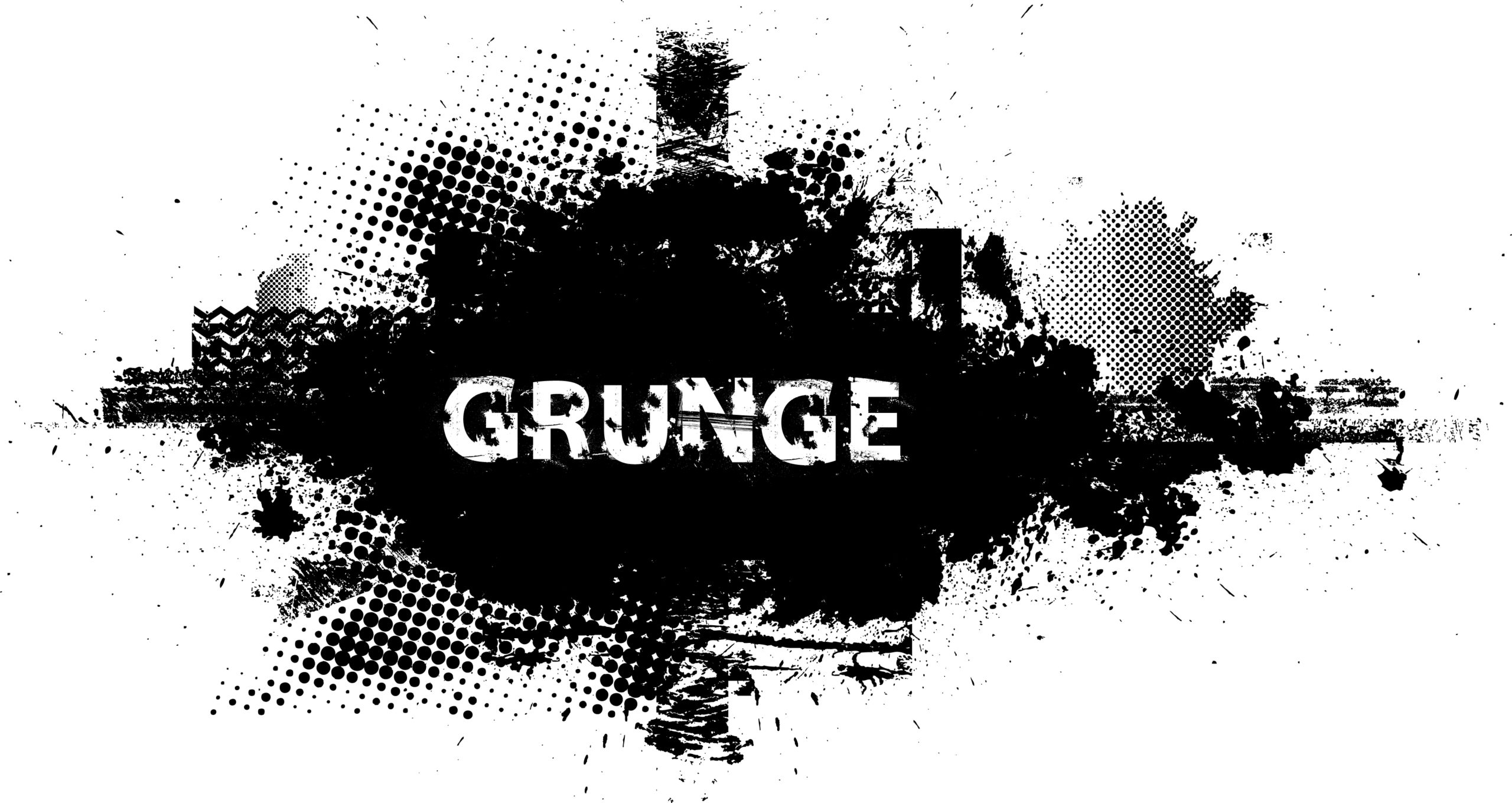 Interestingly, the label, “Alternative,” has historically created pushback…from some of the format’s biggest fans. Back in the 80’s, the term, Modern Rock, was in favor. And while it was well-worn by the time Kurt Cobain, Eddie Vedder, Chris Cornell, and Scott Weiland exposed the world to Grunge in the early 90’s, the industry landed on “Alternative” – even if the audience was never enthralled with what it meant and what it signified.
Interestingly, the label, “Alternative,” has historically created pushback…from some of the format’s biggest fans. Back in the 80’s, the term, Modern Rock, was in favor. And while it was well-worn by the time Kurt Cobain, Eddie Vedder, Chris Cornell, and Scott Weiland exposed the world to Grunge in the early 90’s, the industry landed on “Alternative” – even if the audience was never enthralled with what it meant and what it signified.
Unlike Classic Rock, Country, Blues, Jazz, and other format labels the audience embraces and uses in their everyday speech, “Alternative” has always created some discomfort. “‘Alternative’ to WHAT?” is an often-heard pubshback to the label.
It was a compromise, to be sure. No one had a better idea – including the audience. But if memory serves me well, KROQ never used it – or certainly avoided it. Their call letters defined them – not a radio format brand name.
When the term was shortened to just ALT and a frequency during much of the last several years, these stations had long ceased to truly engage or connect with audience members. Instead, they created a brand that while identifiable, did little to create an audience crusade of supporters.
 Former Live 105 kingpin, Richard Sands (pictured), has published Alternative radio’s definitive trade publication, “The Sands Report” for nearly two decades. Richard has kept his readership on its toes, especially since COVID, fostering a dialogue among the format’s key players.
Former Live 105 kingpin, Richard Sands (pictured), has published Alternative radio’s definitive trade publication, “The Sands Report” for nearly two decades. Richard has kept his readership on its toes, especially since COVID, fostering a dialogue among the format’s key players.
At the end of each year, he combs through 50 or so editions of his weekly report, looking for the quotes that sum up the year. It is always fun reading, because Richard chooses carefully. This year, I was proud to see Jacobs Media hit the trifecta – Mike Stern, Seth Resler, and I had our quotes highlighted in the year-end edition.
But after I got past that glow, I started reading the other contributions. And I came away with that feeling I have long experienced when hanging out with Alternative radio people. By and large, they are some of the cleverest, brightest people in all of radio. OK, and maybe some of the snarkiest.
Here are Richard’s best observations about 2021, and the state of the format. Forget about our quotes, circled in red, and look at Robbie Lloyd, Sean Renet, John Allers, Dave Lavora, Garett Michaels, Gene Sandbloom, and even “Name Withheld By Request.” They are thoughtful “takes” on a format that once was a movement, but now has become a formula.
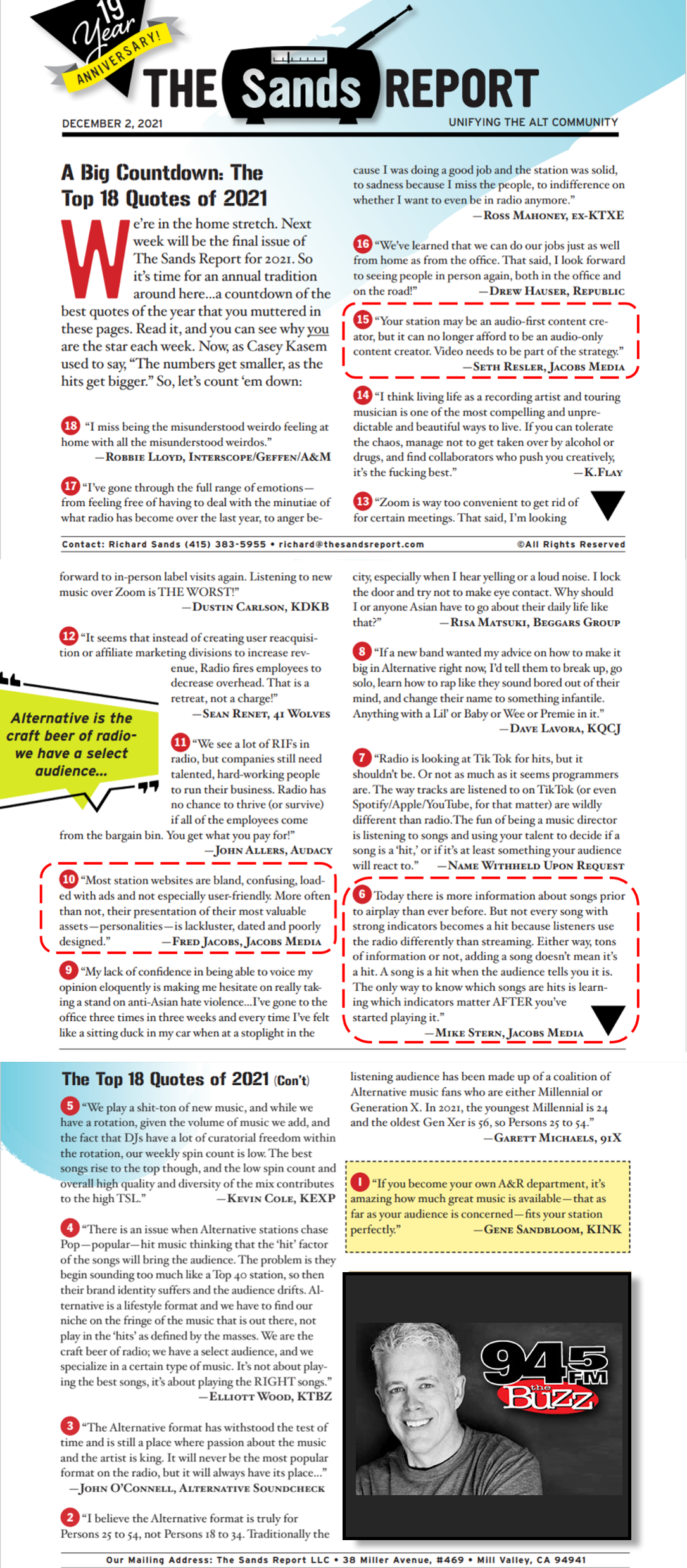
Of all the gems in Richard’s end of year collection, the one that I’ve read and reread is from KTBZ/Houston programmer Elliott Wood (pictured next his quote above). Wood captures the essence of what made the format special in its 80’s gestation period, and later in the 90’s when it took flight.
Alternative done right is a lifestyle format, maybe even a tribal thing. Wood points to the music drifting too Top 40/Pop. I would argue that on many stations today, the presentation has become formulaic and predictable. When most of these stations were at their peaks, there was a certain managed sloppiness to them that made them fun, charming, and compelling. It’s the “misunderstood weirdo” factor that Robbie Lloyd speaks of in the very first quote.
Thinking about the very best Alternative stations I’ve been a part of – and they include 91X, Live 105, The End, X96, KNRK, WHFS, WKQX, KPNT, and a whole slew of stations branded The Edge™, they all had those intangibles many of Richard’s experts talk about, including programmers who knew how to manage the chaos. These stations were on “the cutting edge of”…something – whether it was the music, the morning show, the personalities, the productions, the contests, the events, or the merch.
A key was to not sound like every other station in the market – a tall order when you still need ratings to survive and prosper.
These days when many ALT stations are crushing 250-song “safe lists” in a box with canned-sounding production, you end up with a product that could just as easily be in Austin, Appleton, or Atlanta.
Atlanta.
Is that attitude and that lifestyle achievable in 2022 radio? Or is it just another vestige of a radio past that cannot be recaptured in today’s environment?
In the Sands’ comments, Garret Michaels raises an interesting question about audience targeting. He maintains the traditional demo – 18-34s – is no longer attainable; that the core audience is now made up by consumers who are now Millennials and Xers fit perfectly into the 25-54 box. In other words, those who grew up with the music. That’s a familiar trope to me, and my years in Classic Rock radio – in other words, listeners who “graduated” from Rock, and are more comfortable with music from their youth.
However you parse the debate over the health and future of the format, the more “paint-by-the-numbers” its gotten, the worse it has performed. I’m not suggesting I have “the answer,” but I do believe the opportunity for innovation is right now.
KROQ is regrouping, and the band will not be reunited. Bean’s in England, Kevin’s on KLOS with Sluggo, and Weatherly’s at Spotify. There’s no benchmark, curve, KPIs, or “best practices” for Alternative anymore. All bets are off.
Yes, there are things to be learned from the handful of stations experiencing success at the moment. But there’s more upside in inventive, bright, tuned-in programmers and on-air talent figuring out a new path for this format.
If you talk to people on the public radio side of the spectrum, they might have a very different story about success with Alternative and Triple A formats. Jim McGuinn, Bruce Warren, and now our old friend and Jacobs alum, Tom Calderone, who’s got something new going on in Buffalo. They would tell you that when ratings aren’t the be-all-and-end-all, some very interesting things can be done with content, delivery, and engagement.
our old friend and Jacobs alum, Tom Calderone, who’s got something new going on in Buffalo. They would tell you that when ratings aren’t the be-all-and-end-all, some very interesting things can be done with content, delivery, and engagement.
The loss of a flagship isn’t the end of a format. Rather it’s a clarion call for innovation, experimentation, and creativity – elements that have sadly been in short supply.
But that also means answering some important questions: who are we going after, what do we call ourselves, why do we matter, and what do we stand for? That last one may be the most central to this format’s future.
Next year, I’m hoping those “famous quotes” in The Sands Report don’t sound so aspirational; so shoulda, coulda, woulda.
Instead, they will be a reflective of a resilient format that’s back on its feet and kicking ass.
- DJs And Baristas: Can They Save Their Companies? - May 2, 2025
- Radio’s New Audience Equation: Z Over Y = Trouble - May 1, 2025
- What Is It With Female Robot DJs? - April 30, 2025




Nice to see (a now very dated looking) Edge Dallas logo. Being part of that sign-on and the stations launch was one of my most exciting radio adventures. I would say yea, that might be part of the problem. There’s not much new or exciting, from a staff or listener viewpoint in the format. Is it strong enough to become an ‘oldies’ or ‘classic rock’ format for Gen X? Maybe I’m too far removed, but, seems to me there’s just not enough buzz surrounding ‘rock’ product today to really have a viable contemporary rock format. My millennial daughter told me she got a record player and some records for Christmas from her boyfriend. I asked her what records, she said “Tom Petty and Steely Dan”
On the other side of the coin, WTOP may be on top of the hill by almost twice the billing, but the format is also the most expensive to run. WTOP or WINS (actually 5 of the top billers are talk of some sort) don’t run voice tracking or ‘phone in’ any dayparts. WINS sell line isn’t “give us 22 minutes and we’ll give you yesterday’s news.”
There’s not much alternative and rebellious about being just another signal in a corporate cluster. I could die my hair three different colors, but everyone would just snicker and say look at that loony old man. I wouldn’t be seen as ‘alternative’ I’d just be seen as a poser.
The Edge in Dallas was an exciting station, as many of them were back then. I know it sounds nostalgic to pine for the good old days of format innovation and building a tribe, but on perhaps a different level, I’m not buying the notion it can’t be done again. John, it’s 2022 and I’m on my way to CES. I refuse to believe that radio and innovation are oxymorons. Thanks for engaging on this one.
The first cursory glance at the top billing station by a wide margin reveals one thing – it is not an Entercom and Iheart station.
And when KROQ was ruling the roost? They were a CBS /Infinity station.
Hmmm – is there any causality here?
Interesting observation, Mike. Thanks for commenting.
Mr Michaels’s observation is spot-on, Fred (as are yours). That younger demo is too young to have the history we oldsters do–EVERYTHING they hear anywhere is new to them, so the nostalgia factor is missing and they’ve no gut feeling about what’s shopworn. The older demos, on the other hand, have heard enough to develop their own sense of what’s banal and what isn’t.
And that is where “Alternative” comes in: It is the alternative to boring and banal, which is what most of their market neighbors are (if they’re popular music programs). I’m not saying slander your neighbors on the local dial; they characterize themselves with no need of your assistance. As you said, “I would argue that on many stations today, the presentation has become formulaic and predictable.”
The “craft beer of radio”–I love it! Let’s set the real talent loose in radio’s brewery, with maximum curatorial discretion. Hire the right people and let them get on with it. As Country Joe once sang, “I cast my mind to the good old days, they’re coming up, you know.”
I’m still trying to get my head around leaving the airstaff in a brewery (or music library). The old prog rock jocks knew the music well, and were accustomed to coming into work each day and doing “a show,” that could move in many directions – local, political, musical, whimsical – or combinations. I worry that music logs that have been preprogrammed by someone else not just for years, but for decade, has created a situation where the good old days might be difficult to reconstruct…or even reflect. Thanks for keeping this conversation interesting, as always, John.
Alternative – noun, “existing or functioning outside the established cultural, social, or economic system”. Somehow, by giving it a name and making it a “format” the business forced it to be functioning inside the system. And it’s a name that the audience didn’t embrace – hell, they really didn’t know it meant.
When I was younger, Steve Newell was that guy who showed me all the songs and artists that weren’t on the radio. (As a sixth grader, he had his own turntable and receiver.. with half decent speakers.) Later in life, there was always someone who clued me in to great music, songs that were never on my employer’s limited playlists. That’s my vision of Alternative 2022 – any owner have the balls to let the talent pick the songs? (If you need a cool name, I don’t think WTTS/Indy has copyrighted theirs.)
I think the next permutation of what we now know as “Alternative” may come from someone’s gut and intuition, and not a spreadsheet. Appreciate it, Mark.
As you know, Fred, I’m based in L.A. And we’ve been having the same discussions about KROQ in recent months. You’ve already pointed out many reasons why 106.7 has faltered. Kevin & Bean were essentially holding the station together as the music called Alternative changed … as it has a few times before. What KROQ originally played under Rick Carroll and his team (including the incredibly talented MD Freddy Snakeskin, who is in forced retirement these days) is ancient history now. It declined as Alternative evolved in the 90s, then the further evolution in this century not only made the 80s titles the equivalent of the 1960s on Classic Hits stations, it started to have the same effect on the 90s. Nowadays the biggest hits from the “ROQ of the 80s” era are mainstream CH hits and the lesser titles are over on sister station Jack (KCBS-FM). A huge number of songs that were part of the legendary “Flashback 500” weekends on KROQ are nowhere to be heard anymore.
It is because Alternative is whatever it is at the moment that there really can no longer be a flagship station for the format. Alternative is a different format in every market now. Even in the top 25 markets, when I check the playlists of the stations identified as that format, I find that some are heavily current-based, others are more gold intensive but very few will play more than a couple dozen 80s titles in a given week. There are two stations which play nothing older than around 2010. And even among the stations with a lot of gold, no more than a handful of titles are consistently on even 75% of the stations that still play 80s.
Unlike WTOP and the News format, there is no station in the Alternative format that is going to be “stolen from” in other markets. I would venture to say that Alternative has become a catch-all format descriptor for a disparate group of stations, each of which defines it to fit their own markets and audience. KROQ is faltering because it has reinvented itself so many times already that it can no longer generate any “buzz” from changes the way it did under Carroll and Snakeskin.
And you can’t have a “flagship” station for a format that isn’t reasonably similar in all the markets it exists in.
K.M., I appreciate the comments and the thought you’ve put behind them. I would maintain there’s never been “a way” to program this format in multi-markets. Perhaps during the Grunge explosion, there was a greater degree of agreement about what the format should sound like. I remember during that period we’d hold “Alternative Summits,” and the theme that ran through those meetings was that if you had a dozen program directors in the room, you had 18 different programming philosophies. Ultimately, that may be healthy. There simply may be certain formats that truly are market specific and/or were influenced by a PD and the population.
Thanks for giving us even more to chew on.
Alternative is a format that needs real local care and feeding to thrive and doesn’t adapt as well as other formats to a centralized hub and spoke system. KROQ was a great radio station for a long time, was neglected and suffered for it.
Look at all the KROQ names you mentioned that “got it” and applied talent and dedication to crafting a station that attracted a large audience by sounding like they were trying not to. No one should be surprised that when a uniquely successful radio station loses your GM, PD and morning show, that ratings and revenue drop. KROQ didn’t have the conservative music posture that’s typical of the largest markets – quite the opposite, adding further support to the idea that doing this format well requires local ears and input. Losing key players isn’t a guarantee of failure, WRIF seems to have many of those kinds of losses and managed to hang onto its audience, so it can be done – but they brought in talented replacements and (apparently) understood that doing so would require an upfront investment with no guarantee of success.
I’ll add that when the music supporting a format is on a good roll, the ratings usually follow, despite attempts to homogenize it to save a buck. My sense is that in general, the last few years haven’t been Alternative’s best musically and that at least some of that has to be factored into KROQ’s free fall.
There were other great radio stations in different formats that met the same fate for the same reasons: WBCN, KNIX, WMMS, WYNF, KVIL and WBEB are some that come to mind. That list makes me feel really old.
Bob, thanks for adding to the conversation. Keeping a heritage brand strong and viable for new generations is something that only a handful of rock stations have been able to pull off. The call letters and the memories are the glue, but it’s the personalities – especially in morning – that usually tell the tale. In the case of 50 year juggernauts like WRIF, WMMR, WDVE, KSHE, KISW, KLOS, and others, they’ve managed to find a way to sustain these brands through many ups and downs – morning shows, new owners, competitive threats.
Your tack-on about the music strength (or lack thereof) is a salient point. KROQ was a station that like most stations in the format was dependent on that inflow of great new music. And when that well ran dry, or became dispersed across multi platforms, it can be damaging.
Thanks for your thoughts.
Quick story: In the spring of 2018 my soon to be son-in-law was driving me around L.A. He had the radio on 98.7 KYSR and said he listened to it the most. I asked if he listened to KROQ. He said he never heard of it so I led him to 106.7. He knew and liked the song playing and said, “Great, now I have two stations.” He had lived in L.A. for three years and had NEVER HEARD OF KROQ.
That marketing piece is a big one, especially in a market with a steady stream of newcomers. If you grew up in SoCal, how could you not know about KROQ? But for newcomers, you have to keep marketing big (like Apple does with iPhone). Great story – thanks for sharing it.
One thing that KROQ may have been unable to do was to fully differentiate itself from KYSR, KCSN, and KCRW. Even though only the first of those is a direct competitor (i.e., commercial), I think that it ended up getting squeezed by all of them–and even maybe by KLOS.
KCSN and KCRW do have a lot of the cachet that KROQ used to–which brings up the question of just how much can a present-day *commercial* Modern Rock/Alternative station hold on to its image. One move that I think helped make KROQ sound more like L.A. again was to launch the weekly Alternalido show (which has since been expanded to a lot of Audacy’s other stations in the format). Still, its original host went to KCRW full-time, and KCSN has similar programming on an HD subchannel.
And, even though it might be only tangentially related, the recent “10 Questions” with Gene Sandbloom (which I didn’t come across until recently) might still be helpful…
https://www.allaccess.com/triple-a/10-questions/archive/33866/10-questions-with-gene-sandbloom
It’s never one thing, Eric. You talk about the competition – it is still today, but it was pretty intense over the years, and somehow, KROQ found a way. Between the technology advances, the music going through a tough phase, and COVID, there’s never a smoking guy. And thanks for including Gene’s “10 Questions.” I read them when that issue came out, but this will give others a chance to take in his thoughts.
I actually tuned back into KROQ for the first time since Covid started, and found their morning show to be a combination of funny, edgy, and the alt to a pop show that you speak of. I was pleasantly suprised by what I heard. Male host was sarcastic and sounded right for the demo, but then a Smashing Pumpkins song came on, and I was at a loss.
Brian, that speaks to that question Garett Michaels raised about demographic targeting at this moment in time. But the fact you liked the morning show is a good starting point. Thanks for the comment.
The Alt flagship today is the smartphone.
iPhone or Android? 🙂
Thanks sagely insight, Fred, and a nice surprise that my note to Richard Sands showed up on your radar. Thank you for the nice words.
You make some very important observations about the ALT format having few consensus songs market to market and no flagship station. Lots of fragmenting in the brand and few stations are finding ratings success within this weak music trend in Alternative. KROQ was Mecca back in the day for all us wannabe DJs on the east coast (Live 105 in SF was too). Us east coasters had to find relatives or friends in LA and SF who could mail us cassette tapes so we could listen to KROQ and KITS back in the day. It was so important and the music was mind-blowing. Now the KROQ “World Famous” brand is way outside the top 10 with their music offering, and KITS is already gone. It sure feels like we are in some dark days.
I remember watching WNUA (Chicago), the flagship of the Smooth Jazz format, years back collapse that format when they flipped. The SJ stations all over struggled with the PPM currency and once WNUA flipped the writing was on the wall for that format and stations quickly moved into new formats. The Jazz themed format flagship couldn’t survive in Jazzland-Chicago and the format was pronounced dead. Hoping that is NOT Alternative’s fate.
Keep up the great work Fred!
Interesting observation about WNUA and perhaps a topic that Fred et al can address. WNUA/Smooth Jazz didn’t fail because of a lack of listening. It failed (IMHO) because of the change in measurement methods. I think I have this right – PPM requires huge cumes and discounts stations that depend on time spent listening from a more involved audience. Did KROQ suffer the same fate?
Mark, That is a question for someone smarter who can dig in and see their numbers, but I would guess not. AQH Share = Daily Cume and Daily TSL. I suspect that KROQ has the cume by being in a huge market but not the TSL to get enough AQH share.
And yes, I remember the same for WNUA: it was the measurement shift to PPM, going from recall (diary) to reality (meters). Beyond that I am not sure what the cume or TSL was for NUA or any of those SJ stations.
Elliott, I was hoping to hear from you. Thanks for a truly thoughtful comment here, giving me context on how you got to where you are. Perspective is everything when we’re talking about the trajectories of radio formats. It will never be the way it used to be, and while we may be in for some “dark days,” there are communities waiting to be served that get nothing substantive from Spotify except playlists. Radio has a role to play here, but it’s not the “2 minute promise.”
Have a great 2022, thanks for your kind words, and let’s stay in touch.
I agree: let’s keep perspective and serve the audience, not the chart. — with “serve” being the directive. thanks again!
Thanks for another great blog Fred! I was fortunate enough to have worked at WFNX Boston as MD. Being an independently owned station certainly helped us because the owner liked being the scrappy, cool-kids station and trusted our programming judgement. Our jocks were great too. Morning Guy Tai had a great quote about the wife of KISS 108’s Matty in the Morning–“She goes to bed with Matty and wakes up with me!” Definitely one of his funniest. I think timing had so much to do with success too. WFNX began its alternative journey in 1982, an early bird along with KROQ, WHFS, etc. Certain stations were already in place when the tide turned. Plus, there were a number of female MDs in alternative which you KNOW had a lot to do with the format’s success… 😉
Thanks for the perspective on FNX, Laurie. So many stations had that special relationship with their audiences/tribes. Love the Tai line!
Thankfully, Fred – I am still collecting healthy royalties from that line, now totaling exactly eh…. oh well. KROQ truly was a top dog, and their swagger was well earned. I was jealous of their whole aura, which was formidable. Weatherly was a magician. Laurie Gail was born and raised into Alternative via WFNX, but was far more successful afterward, becoming a multi-format digital media expert. My jump from Alternative to talk was great on paper – let’s leave it at that. The name Max gave me, “Morning Guy Tai” is both an outdated moniker and a badge of honor. Alternative mattered.
Now at 60 years old, Alternative still feels young. Not sure what that is about….
What made these stations feel larger than life was the same thing all great stations do regardless of the format. Jocks – live. Production value. Attitude. Everything outside of the music. The music has to be right, but all of the other stuff creates passion. You have to fight like hell to hang on to it when you get that. Because when it is there – even today…it is so important. I’ll contend it is not just important to a single station but also for a market cluster.
J, I’m right there with you. You’ve articulated it very well. The music is like fluid that connects the parts. But those parts are what made/makes Alternative a place to hang out that was like nothing else on the FM band. Funny, it didn’t seem all that hard to capture 30 years ago. But it is easy to lose. Thanks for the comment.
Fred,
Love this, great blog, as usual.
Seems as though rock and alternative need to get back together instead of splitting the market. A rock leaning alt station or alt leaning rocker with the right people, stationality and attitude just may be what’s missing in both formats.
And the swagger, either you got it or you’re market share suffers.
‘97x. Bam. The future of Rick and roll.’ – dustin hoffman in rain man.
The greatest radio station y’all never heard of. So anti radio that it was the best radio station to ever exist in this genre. Bands you’ve never heard of. Songs you will never hear again.
Thanks for the comment.
Commenting super late to this blog post I found through google. Wish I could have posted then. I think part of the reason for KROQ’s issues are multi-facited. Age is one, the demographic gets older, they want to listen to what they are used to and sometimes shun newer music. A great station mixes old with new and keeps things fresh and not stale. Obviously easier said than done. Another is the unpredictable factor that comes from this format. I sometimes listen to old broadcasts on the internet from KROQ’s golden age and infant era and it sounds nothing like it does now. It was a bit nostalgic and mindblowing hearing DJs overlapping each other, being irreverent, silly and wacky. Just exuding their personalities and then throwing on a record because it sounds cool, not because its strictly on a PD’s or corporate playlist. You’d find songs that would fit the format and then songs that jumped way out and some that were close enough. It made things fresh and different. Everyday you’d never know what you’d hear next. But doing that also reinforced the format. Does any station do that anymore? Does any station try hard enough to earn the cred and faithful listening?
It has become a rarity, Gabriel. The world of radio is much more buttoned up today, perhaps to its detriment (as you point out). You’ve nailed much of why KROQ succeeded back then – it was not a format, but a culture, attitude, and vibe. There are a handful of stations that still roll that way, but they are few and far between. Thanks for the comment.
Late to the party, but this is how I feel, as someone listening in to San Diego stations like 94.9/91X since 2005 (I was born in 2000, my earliest memories go around 2005).
I think the real fault for KROQ’s demise was the ownership of Entercom, Audacy is a stain on the alternative music industry with how corporate and same the music choices are, which gives this believe that there’s ZERO good alternative stuff going on, which is quite the opposite, and is why a younger audience is gravitating towards streaming to hear artists that are pretty big and would be PERFECT for alternative (Black MIDI, Fontaines DC, Phoebe Bridgers, Soccer Mommy, Black Country New Road, Squid, I could go on forever), as well as the lack of any station feeling local, like the djs are just doing the job of the company they’re owned by, playing the same 200 songs on death rotation and giving away tickets and just talking for a minute while the same song plays every day. It’s boring, it’s sad to see the DJs who have potential, it’s not their fault they’re in this position, that’s the issue and why radio is a joke with everyone now, and it sucks because I love radio and KNOW how genuinely fun and enjoyable it can be.
Like seeing what 91X was doing all these years, with Halloran returning for a bit in the 2010s, letting lose as PD and playing a shitton of cool stuff, Garett now taking the baton and trying to manuever that same vision after Halloran got let go and they went a bit more commercial back there in what I’d call probably alt’s worst era (2017-2019) but there was still some great stuff focused on 91X either from specialty programs or new adds that it didn’t kill the station for me. 2020’s is very promising for alternative, especially the past two years, but the issue is it doesn’t seem so because a lot of alt stations are focusing on playing tiktok literally who artists that feel like payola as well as the same Imagine Dragons stuff, instead of focusing on acts that most people actually would enjoy, as well as artists both local and fit the station’s style, that listeners would enjoy.
I love Garett, cool dude, but I’d have to disagree a tiny bit with “25-54 year olds audience not because of the demographics, but more of “they graduated from rock, they’re more comfortable with music from their youth”, and while that is a statement that is true, there’s so many people who are still tuned in for alternative for music discovery, to continue finding new acts that could give them something they would love just as much as the golden age of the 80s-2000s. My mom is a Gen X’er, grew up listening to radio a lot, now she’s very bored by it because both 91X and 94.9 are more classic, and while I listen to 91X as a huge fan and have seen and liked some things about since after the classic alt change, there’s not enough new music being played, not enough classic songs or curveballs, maybe about 800-900 songs which sounds awesome but then you’ll catch a lot of the same few artists every 2 hours or certain SONGS that were hits (and they deserve airplay) but you’ll catch those same songs VERY frequently in the same hour, I feel like that needs a bit of a fix, especially for such a wonderful flagship station who HAS the right people behind it (the same people who always worked in san diego for 91X or went to 94/9 (throwback to when it was about the music)), so it’s rather confusing a lot of the library and music discovery 91X is known for and could probably become the next NEW KROQ for now, has decided “yeah, this is too much for us, alternative is kinda dead bro, anyway here’s grunge.” while spotify is reeling in the revenue because they focus on EVERYTHING both the stuff people HATE in alternative but so much indie focus, as well SiriusXMU and public radio doing the same thing and succeeding (also BBC Radio in the UK isn’t having any problems, they’re doing the same music discovery things and engage with the audience). I think alternative just needs to do what it always did, let the DJs play, let them have fun, play a mix of variety of old and new, make sure songs don’t play too many times in a week, but new music should be rotated more than 1 time per hour, see how your local audience feels, every demographic should be asked what they want in radio, do cool stunts and promotions, do request shows, talk to your audience on social media, have fun personalities, focus on locality in every market with local bands. I know radio can’t do something varied for most of the day every day, that’s not what im saying, but I think stations everywhere and 91X (who has the potential to do something great with the format) could do a bit more.
94/9 era is reminiscent with a lot of people who used to listen to radio, that era was lots of fun and from what i can remember of it as a kid, same with 91X, who still do fun promotions and events but they feel a bit fewer and far between, it’d also be cool to see more engagement with artists again. I’m early Gen Z, I’d love to work for radio one day, but I fear alternative will just be dead once the oldest generations are gone and it’s just another classics station thing. Alternative should NEVER be classic only, that defeats the purpose of it.
I’m going to let this one simmer here (and on Twitter). These are interesting observations and I’m interested in how others react. Thanks for taking the time.